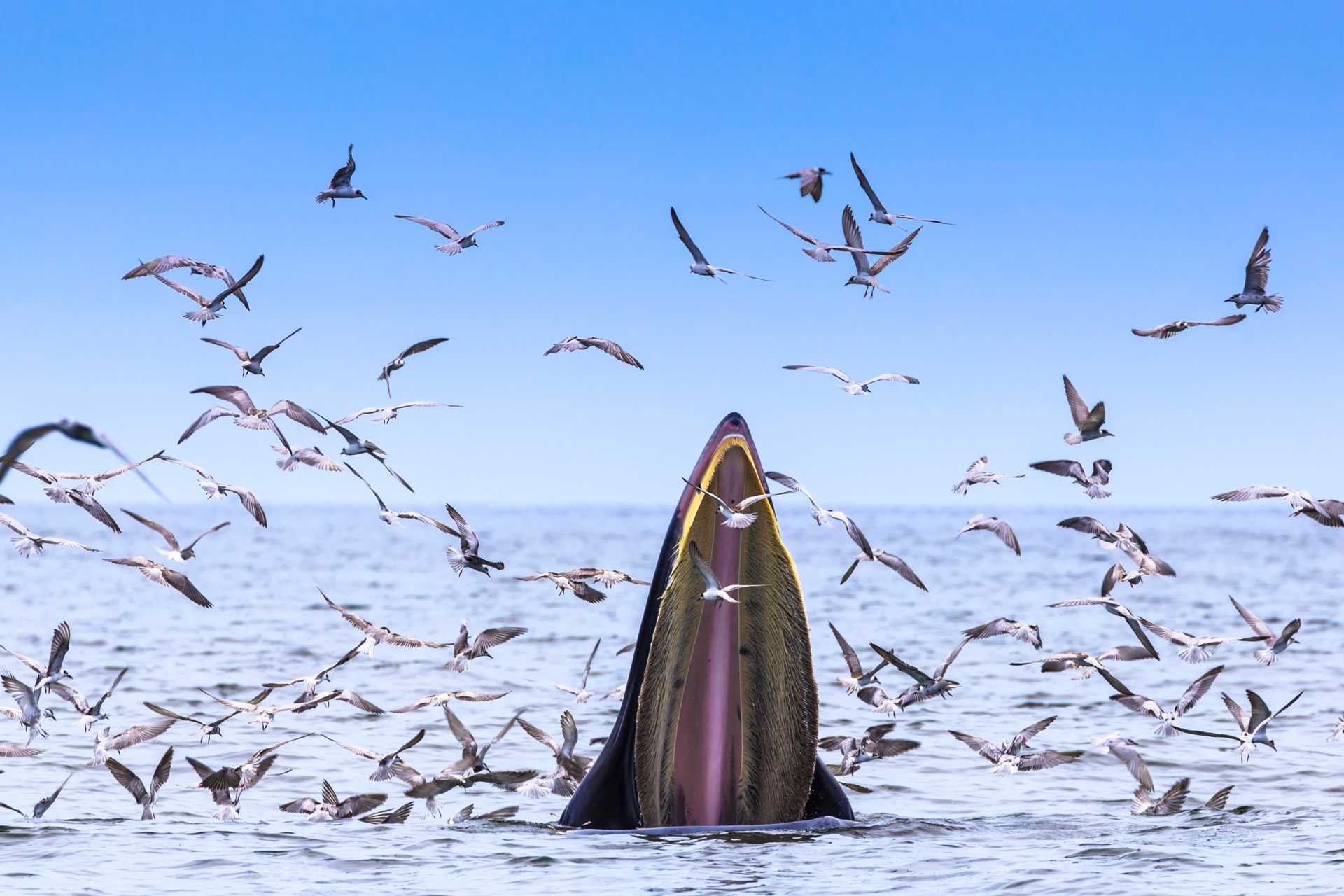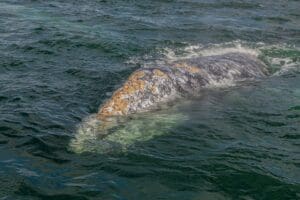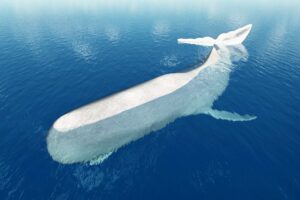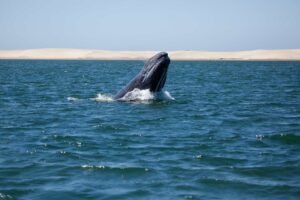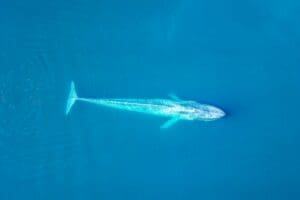Bryde’s Whale: Giants of the Warm Seas
Discover the enchanting world of Bryde’s Whale with us. Dive into the sun-kissed Pacific to explore the grace and power of these majestic creatures. Uncover their unique behaviors and vital role in the marine ecosystem, and be captivated by the beauty of these ocean giants.
Facts First
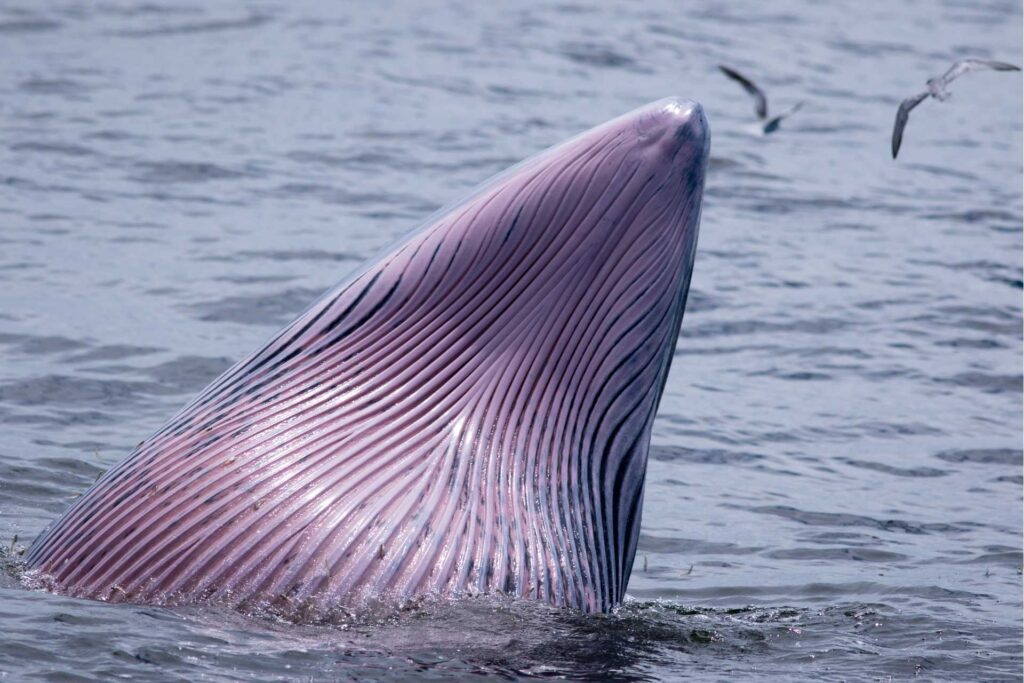

Understanding Bryde’s Whale
Taxonomy and classification
You might be intrigued to learn that the Bryde’s whale (pronounced “broo-dus”) is part of the Balaenopteridae family, which includes other large whales like the humpback and blue whale. Its scientific name is Balaenoptera edeni, named after Johan Bryde, a Norwegian whaler who helped establish the first whaling station in South Africa. Taxonomically, there are a couple of recognized subspecies, though their classification has often been the subject of debate among scientists.
Physical characteristics and size
Bryde’s whales are robust and sleek giants of the sea. Typically, they grow to lengths of 12 to 16 meters, with females generally larger than males. They can weigh anywhere between 12 to 25 tons.
One of the standout features of their appearance is the trio of parallel ridges on the top of their head, a unique characteristic among the baleen whales, as other similar whales usually have only one. This whale also sports a set of baleen plates that are great for filtering food and approximately 40-70 ventral pleats that stretch from the mouth to the belly.
Distinguishing features from other whales
When you’re looking to distinguish a Bryde’s whale from others, there are a few key features to keep an eye on. Their sleek, dark gray bodies are often accompanied by a lighter underside. Unlike other whales, the Bryde’s whale has two additional ridges alongside the central ridge on their heads. Additionally, their dorsal fin is tall, falcate (hooked), and located far back on their body, helping to set them apart from other species.
- Spotlight On Species: Humpback Whales
- Blue Whale: The Largest Animal On Earth
- Spotlight On Species: Orca Whales In The Wild
- Mysteries of the Deep: Andrews’ Beaked Whale Explained
- The Plight of the Right Whale
Habitat and Distribution
Preferred warm sea environments
Your love for warm, tropical paradises may be something you share with the Bryde’s whale, as they’re known to prefer warmer sea environments. While other whale species migrate to feed and breed, Bryde’s whales stick to waters above 16°C, typically near the surface where the sun glistens off the water.
Global distribution patterns
You can find Bryde’s whales in various oceans across the world. They favor the warm waters of the Atlantic, Pacific, and Indian Oceans, predominantly between 40°N and 40°S. Unlike some of their migratory relatives, Bryde’s whales do not travel vast distances across the oceans but may make localized movements in response to changes in water temperature or prey availability.
Migration and movement behaviors
While they may not have an extensive migratory pattern, Bryde’s whales show movement behaviors influenced by the abundance of food. If you were to track one, you’d see that they follow the movement of their prey, making seasonal inshore and offshore movements. This modest migration ensures they’re always within reach of a meal.
Behavior and Social Structure
Feeding habits and diet
Speaking of meals, Bryde’s whales have a particular taste for small fish, sardines, and anchovies, among other schooling fish. They also indulge in krill and plankton. They’re lunge feeders, which means you might see them bursting through a school of fish with their mouth wide open, taking in vast amounts of water and prey, which is then filtered out through their baleen.
Social groupings and interaction
You’ll rarely find Bryde’s whales in large social groups, mostly solitary or found in pairs, perhaps a mother and her calf or two adults. However, in places rich in food, you might spot small, transient groups that come together to feast.
Breaching and surface behaviors
If you’re lucky, you might witness a Bryde’s whale breaching – this is when they leap out of the water, a truly breathtaking sight. Their surface behavior is varied and can also include ‘blow-hole shots’ – strong exhale through their blowholes – and ‘chin slaps’ where they bump their lower jaw against the water’s surface.
Reproduction and Lifespan
Mating rituals and calving
The mating rituals of Bryde’s whales are not well understood; however, what is known is that they reproduce year-round, though there may be peaks that correspond to the region they’re in. After a gestation period of about 12 months, females give birth to a single calf, which enters the world already several meters long and is capable of swimming nearly immediately.
Growth stages and lifespan
Like their relatives, Bryde’s whales are slow to mature. They may not reach full adulthood until they’re around 8-13 years old. In terms of their lifespan, if they dodge the many dangers of the ocean, they can live to be around 50-70 years old.
Parental care and juvenile development
A Bryde’s whale calf is well cared for by its mother, nursing for six to twelve months until it’s ready to handle solid food. During this time, the bond between mother and calf is strong, providing the calf with the protection and guidance needed to thrive in the deep blue.
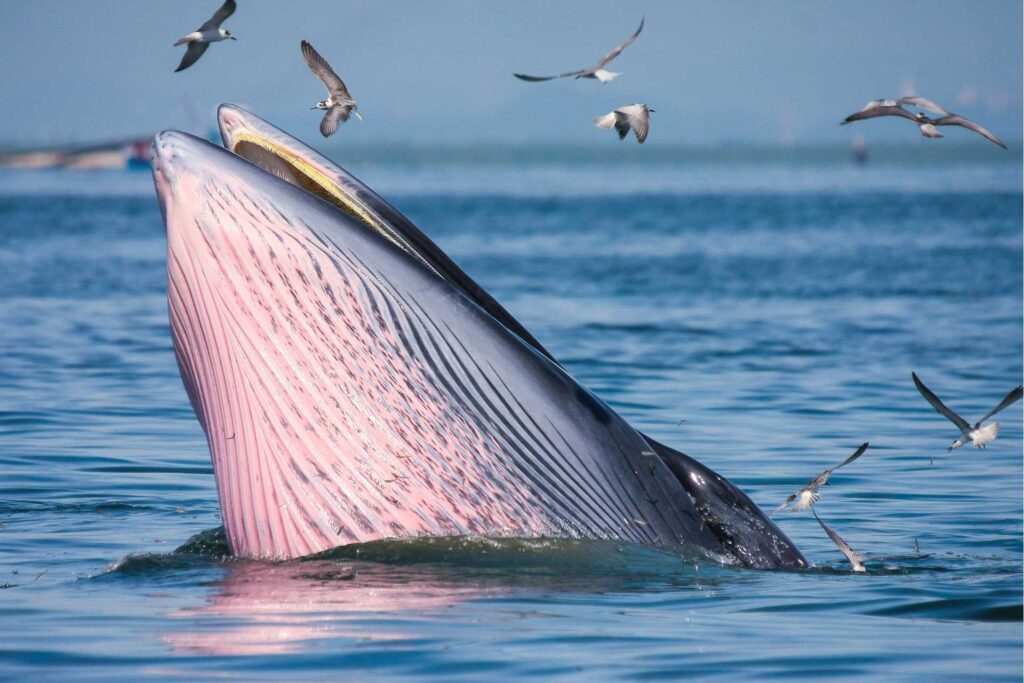

Vocalization and Communication
Types of Bryde’s whale calls
If you were to eavesdrop on a Bryde’s whale, you’d hear a symphony of sounds, from moans and groans to whistles and pulses. These calls can be quite low-frequency, meaning that they carry long distances underwater.
Purpose of sounds
The purpose of these sounds is varied. It’s thought that calls may play a role in navigation, foraging, and maintaining social contacts – similar to how you might use your phone to text or call your friends and family to stay in touch.
Communication within pods
Although Bryde’s whales are not known for large pods, they do communicate with one another when they are in pairs or small groups. This communication is essential, as the ocean is vast and can be isolating. Their vocalizations are a key aspect of their social interactions, especially between mother and calf.
Threats to the Bryde’s Whale
Human-related threats
Unfortunately, Bryde’s whales face several human-related threats, including ship strikes, fishing gear entanglements, and the impacts of marine pollution. These threats can cause serious injury or even death, making human activity one of the most significant dangers to these majestic creatures.
Natural predators
When it comes to the circle of life, even these giants aren’t at the top. Bryde’s whales can fall prey to large sharks and orcas, though they’re not common targets due to their size and strength.
Impact of climate change
Climate change poses a looming threat to Bryde’s whales by disrupting the delicate balance of marine ecosystems. Changes in sea temperatures can affect the distribution of their prey, which in turn can force Bryde’s whales to alter their habitat range, possibly putting them in more danger from human activities.
- Whale Species Guide: Types, Behavior, And Life Cycles
- Whale Behavior And Communication: A Deep Dive
- Discovering The Magic Of Whales: An Adventure For Everyone
Conservation Efforts
Current conservation status
The International Union for Conservation of Nature (IUCN) lists Bryde’s whales as ‘Data Deficient,’ which means there isn’t enough information to assess their exact conservation status. Nonetheless, concern for their well-being continues growing alongside the recognition of their threats.
International and local initiatives
There are several international and local initiatives aimed at protecting Bryde’s whales. These include regulations on shipping speeds in whale habitats, guidelines for sustainable fishing practices, and establishing marine protected areas. Additionally, the International Whaling Commission has put measures to regulate whaling and aid in whale conservation.
Research and monitoring programs
Various research and monitoring programs have been established to better protect Bryde’s whales. These programs aim to track whale populations, study their behavior, and monitor their health. Scientists use techniques like photo identification, acoustic monitoring, and satellite tagging to gather essential data.
Interaction with Humans
Whale watching and eco-tourism
Whale watching has become a popular way for people to interact with Bryde’s whales, offering a chance to see these magnificent creatures up close. Eco-tourism encourages responsible and sustainable interactions, emphasizing minimal impact on whale behavior and habitat.
Incidents and historical hunting
Historically, Bryde’s whales have been subject to commercial whaling. While this is no longer as prevalent, past incidents have still left their mark on populations. Responsible education about this history is important in preventing future harm.
Educational significance and human awareness
Education about Bryde’s whales plays a crucial role in increasing human awareness and fostering a desire to protect them. By understanding their life history, the threats they face, and how our actions can impact them, we can advocate for better protections and sustainable ocean use.
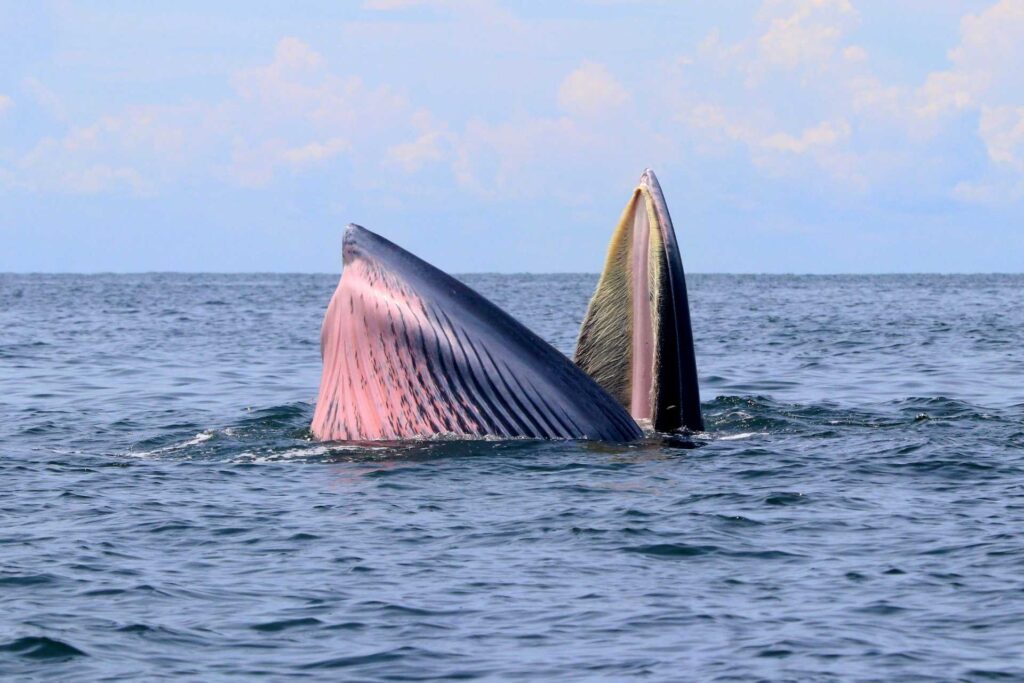

Research and Study on Bryde’s Whales
Techniques for studying these cetaceans
To study Bryde’s whales, scientists use various techniques, including tagging, biopsy samples, and aerial surveys. These methods help researchers gain insights into the whales’ movement patterns, feeding behavior, health, and overall population dynamics.
Key discoveries about their biology and ecology
Over time, key discoveries have been made about the biology and ecology of Bryde’s whales. For example, we now understand the importance of their role in marine ecosystems as predators that help maintain the balance of their prey populations.
Open questions and future research directions
There are still many open questions regarding the Bryde’s whale, such as the full extent of their migration patterns, their complex communication, and the long-term effects of environmental changes on their populations. Future research will continue to address these questions to gain a more complete understanding.
Encountering a Bryde’s Whale
Best practices for safe observation
When observing Bryde’s whales, it’s crucial to follow best practices to ensure the whales’ safety and yours. Keeping a respectful distance, limiting observation time, and avoiding the use of flash photography are all important factors.
Ethical considerations
Ethical considerations involve understanding and respecting Bryde’s whales’ space and natural behaviors. Observers should strive to minimize any potential stress or disruption to the animals.
Reporting sightings for scientific contribution
Reporting the sighting can contribute to scientific research and conservation efforts if you’re fortunate enough to spot a Bryde’s whale. Details of location, time, behavior, and any distinguishing marks on the whales can provide valuable information for researchers.
Observing these guidelines isn’t just about having a pleasant encounter; it’s a way to actively participate in the stewardship of our oceans and the majestic creatures that call it home. Your awareness and actions play a significant role in shaping the future for Bryde’s whales and ensuring that future generations may also witness these giants of the warm seas.

